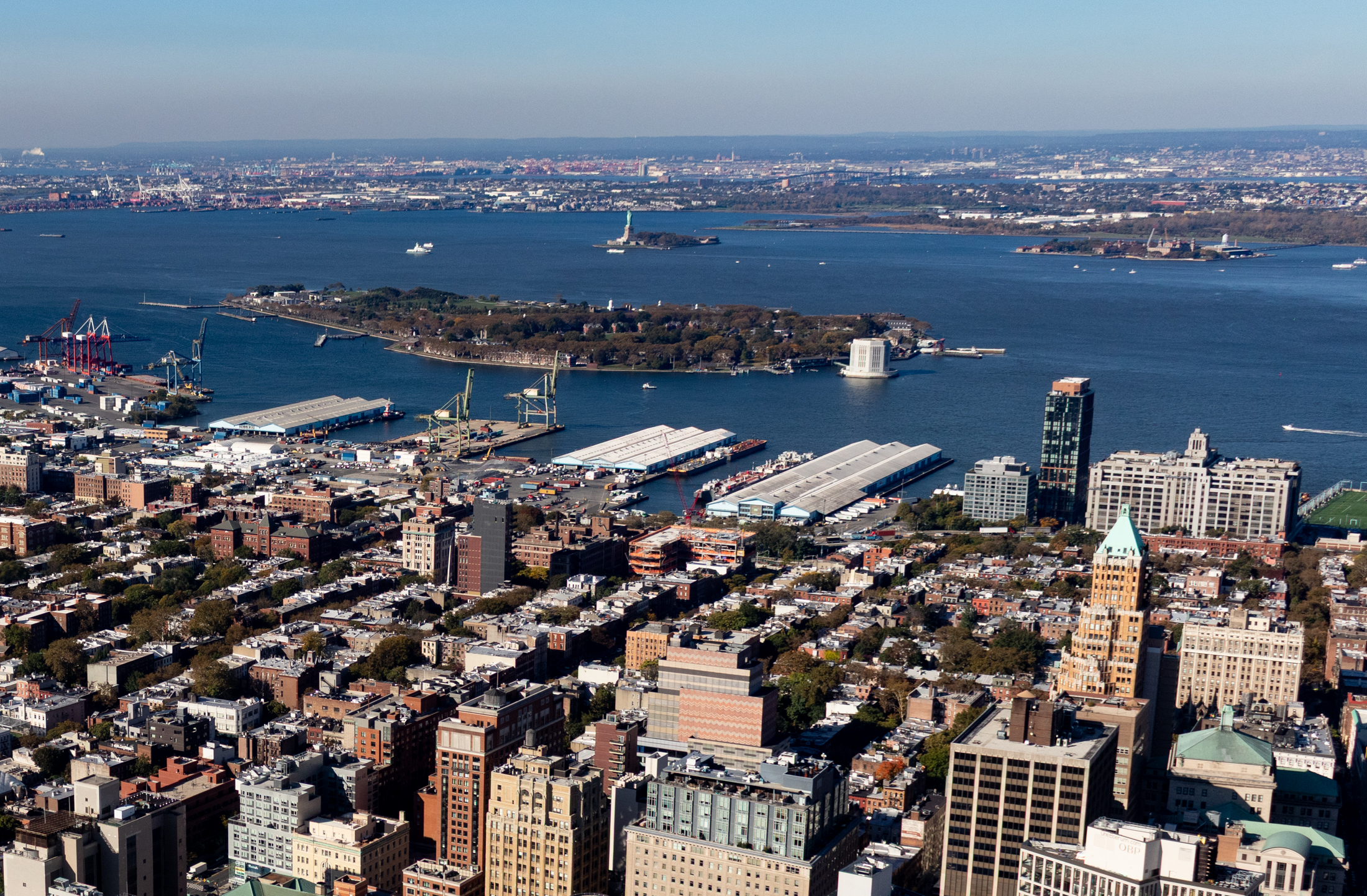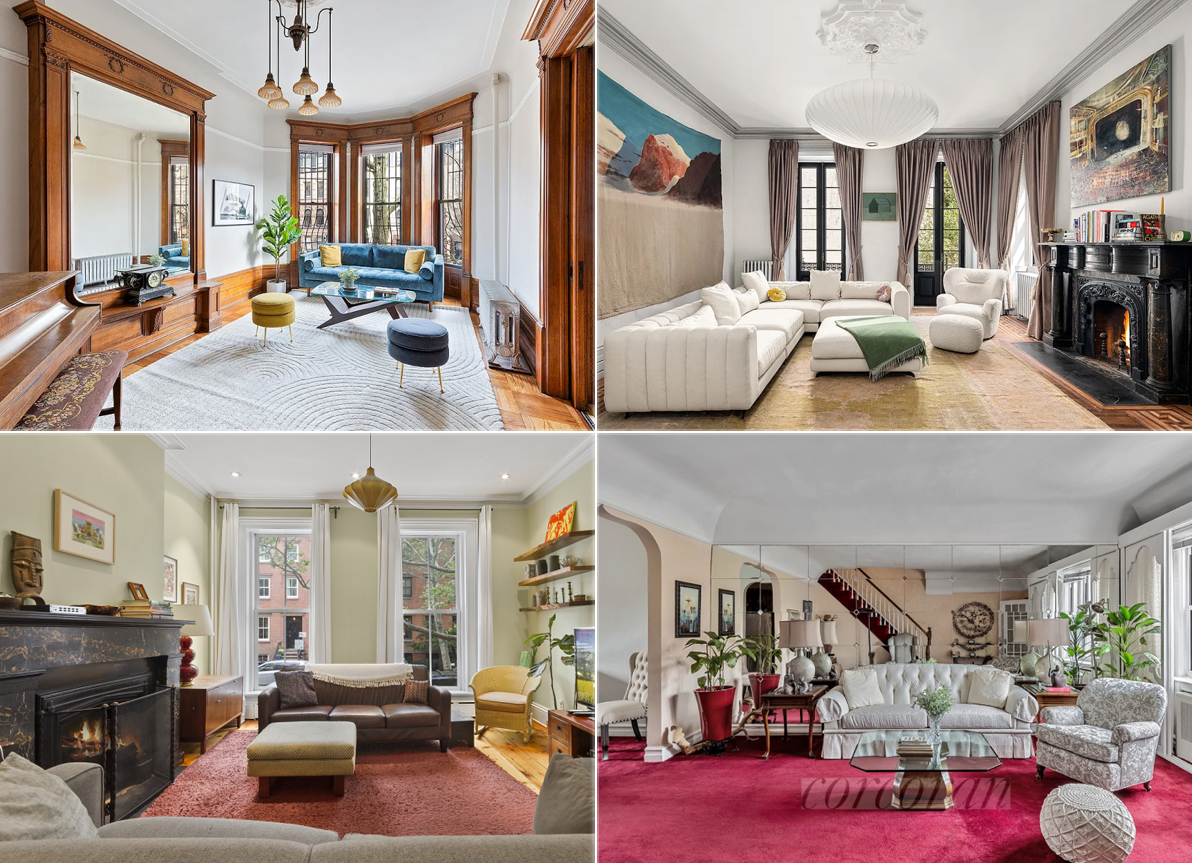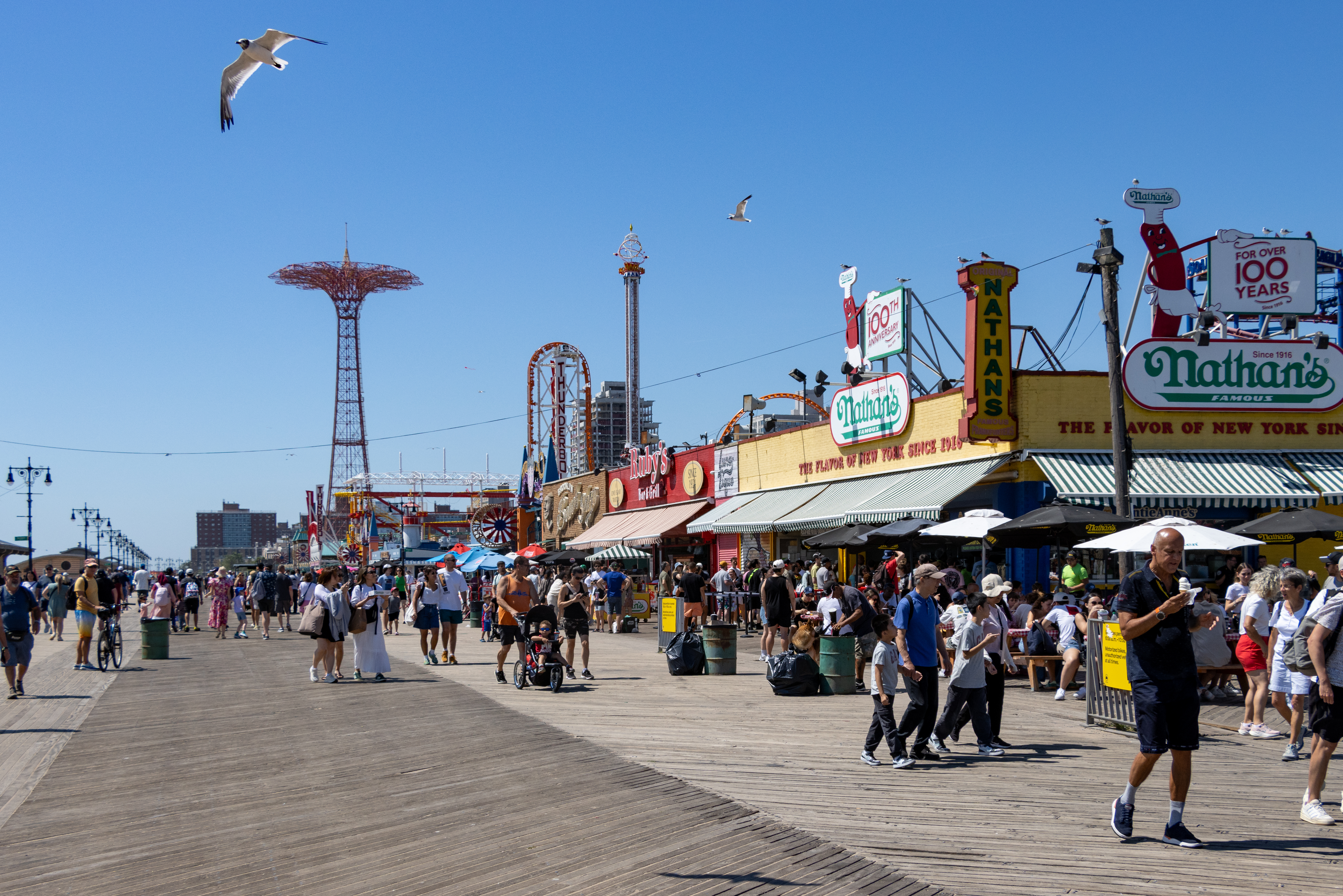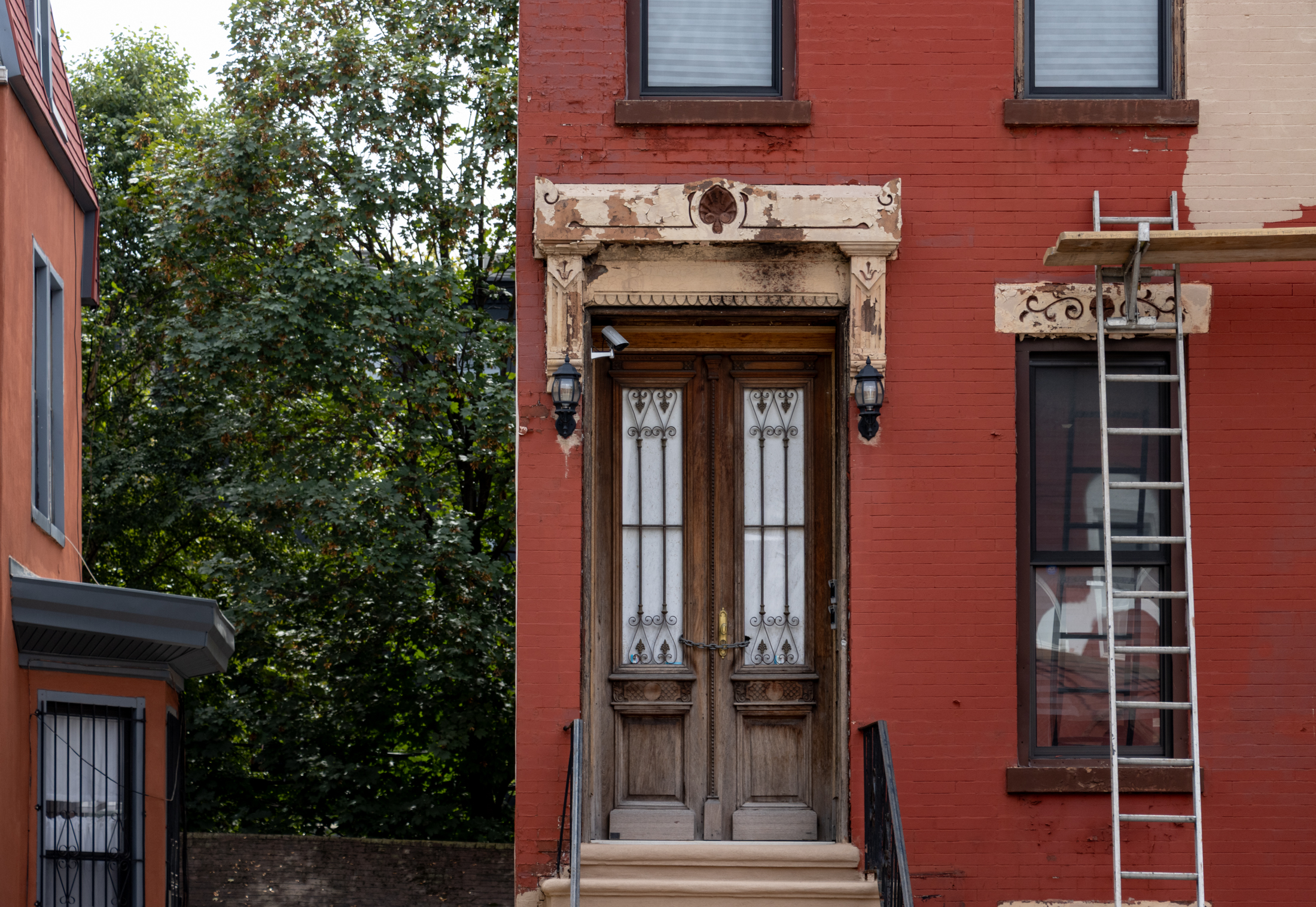Last Week's Biggest Sales
1. BROOKLYN HEIGHTS $3,895,000 80 State Street GMAP (left) This 4,550-sf, 2-family was first listed for $4,950,000 in late 2008, according to StreetEasy, and the price was cut a number of times until it was asking $3,895,000 last September. Ad said: “Rare opportunity to own a 25-foot-wide Gothic Revival 1850’s Brooklyn Heights townhouse with original…


1. BROOKLYN HEIGHTS $3,895,000
80 State Street GMAP (left)
This 4,550-sf, 2-family was first listed for $4,950,000 in late 2008, according to StreetEasy, and the price was cut a number of times until it was asking $3,895,000 last September. Ad said: “Rare opportunity to own a 25-foot-wide Gothic Revival 1850’s Brooklyn Heights townhouse with original details intact. Grand double parlor with exquisite moldings and original pocket doors, three wood-burning fireplaces, and rooms flooded with superb Southern-facing light…” Its seller bought it for $3,300,000 in 2005. Entered into contract on 10/1/09; closed on 1/5/10; deed recorded on 1/27/10.
2. COBBLE HILL $3,200,000
243 Kane Street GMAP (right)
As covered last week, this renovated townhouse was originally asking $2,950,000 in ’07, but the price was raised to $4,075,000 in mid-’08. As it lingered on the market, the price was reduced several times until it was last asking $3,500,000 as of mid-’09. Its seller bought it for $1,802,000 in 2007. Entered into contract on 1/15/10; closed on 1/15/10; deed recorded on 1/28/10.
3. BROOKLYN HEIGHTS $2,995,000
20 Grace Court Alley GMAP
As previously noted this 2,550-square-foot brick house was originally asking $3,300,000 and the widget appraisal came in at $2,766,135. Its sellers bought it for $2,675,000 in ’05. Entered into contract on 11/17/09; closed on 1/15/10; deed recorded on 1/28/10.
4. PARK SLOPE $2,125,000
524 2nd Street GMAP
When this 2-family was a House of the Day in October, it was listed for $2,375,000. The reader widget guess on it was $1,952,045. Entered into contract on 11/5/09; closed on 1/11/10; deed recorded on 1/26/10.
5. FORT GREENE $1,870,000
119 Fort Greene Place GMAP
When this brownstone was a House of the Day in November, it was listed for $1,995,000. The reader widget appraisal clocked in at $1,615,042. Entered into contract on 11/25/09; closed on 1/7/10; deed recorded on 1/27/10.
Photos from PropShark.





“house would rent for about $6,000-$6,500 today so my purchase price [$768K to $972K] is about 11x-12x 2010 rents”
You paid half off peak comps of $1.4M/0.8 (we’re -20% down) = $1.75M in 2003. With much more overall US debt, much tighter credit, much higher unemployment (and rising) and unprecedented emergency government intervention that has so far proven futile yet hindering, exactly how will your comps escape a retraction back to that year?
***Bid half off peak comps***
Financeguy,
A return reality check.
1942? Hard for me to speak to that. The great depression had hardly ended. There was no safety net. The country was poor and the world was at war. Stock investors expected equities to have dividend yields exceeding bond yields in order to compensate them for the “extra risk” of owning stocks I’m amazed that property traded as high as 6.4x rents.
I can speak to 1975 and 1988 because I lived in the City then, If you’re trying to compare brownstone brooklyn then with now you’re comparing apples to oranges. I’ll give you an example. In 1982 three friends and I rented an entire brownstone (4 floors) on State St. in Boerum Hill for $1,400 per month, or $16,800 per year. At 10x rent, the property would have been valued at $168,000. It likely wasn’t worth that. Why? First, while unemployment rates were high (on par with today) mortgage rates were about 15% (about 1,000 basis points higher than today). Second, quality of life was totally different. You had better than even odds of getting mugged each year. The murder rate was about 5x today’s rate. If you parked on the street your car would likely be broken into or stolen. There were very few restaurants or entertainment options. If I bought the house I would have overpaid for the time, but 25 years later I would have paid off my mortgage and had a house worth close to $2.0 million. Why because brooklyn had a renaissance and mortgage rates had an extended decline.
I was a happy renter to 20 years before buying a single family brownstone in 2003. I think my house would have rented for about $4,000-$4,500 in 2003 so I figure I paid about 16x-18x 2003 rents. I think the house would rent for about $6,000-$6,500 today so my purchase price is about 11x-12x 2010 rents. I know the house is worth more than it was in 2003 since an identical (I mean just about completely identical) building right next to me just sold for $1.4 million which is way higher than my 2003 purchase price.
You say that in the last boom, p”rices peaked at 10x” rent and I say that you’re not going to get a house for that price.
BH: a reality check:
“In the Appraisal Journal, October 1942, John C. Tredwell, MAI in New York indicated that the “typical speculative buyer†who acquires property with debt would pay about 6.4 times the gross rent. Buyers who pay all cash would pay about 5.7 times the gross rent.”
“Quality properties were reported to be selling between 2 or 3 times the gross rent in Manhattan in 1975.”
“By 1988, gross income multipliers peaked at an average of 9.32 for walk-ups and, then, declined during the 1990’s recession to a low of 3.57 in 1992.”
–http://realestatevaluation.wordpress.com/2009/09/03/a-little-bit-of-history-gross-rent-multipliers-in-new-york-city-over-time/
In the last boom, prices PEAKED at less than 10x gross rent.
Even with cheap credit, it’s hard to imagine you are going to make money at more than 10x, unless you expect rapid rent increases (Stuyvesant Town) or a large collection of other people willing to pay irrational prices (the last decade).
If the economy doesn’t recover quickly, BHO may well be overly bullish.
So now it’s “good browntones”, Boerum Hill? Even those were had in the 90’s @ 10x and they’ll be more than had this decade (bigger boom, bigger bust).
Fine, slopefarm, Stuy Town @ half off. That’s more useful. They lost a long shot bet on rent destabilization but the effect is similar to other properties throughout the city as rents have fallen significantly from the peak due to unemployment (higher than the national average and getting worse). Prices everywhere are getting killed because of the collapsed Ponzi appreciation model and 10x falling rents.
Tishman/BlackRock represent the smart money. They are among the commercial pioneers (this cycle, this city) of “walking away”. Many others will follow. The Times has an article on this today concerning individual homeowners.
***Bid half peak comps***
Stuy Town is a useless example. It’s value was altered by the Court of Appeals.
Finance Guy,
I understand that real estate investments require yield premiums to “risk free” treasury returns (which actually seem really risky to me right now due to inflation risk). I also understand that real estate ownership involves expenses. The flip side of that, is that historically rents have gone up. So, your cash on cash return should increase over time as your rent roll rises.
BHO,
Booms and busts are a process. But even in a bust, you’re not getting a good brownstone at 10x rents.
“That’s why there are no brownstones in good neighborhoods selling for anywhere near 10x rents despite what BHO says.”
Say “cheese”, market! Nice snapshot, Boerum Hill! But we’re still rolling. There’s no deadline for the bottom. The crash is on nobody’s schedule. It’s a process, not an event.
***Bid half off peak comps***
BH: Last time I checked, brownstones had expenses just like all other real estate — taxes, utilities, vacancies, and especially maintenance and repairs — that securities don’t. Also, usually, quite a bit of labor. 10% on gross expected rents is quite a bit less net.
And highly leveraged investments even without buying at the end of a bubble are quite a bit riskier — and therefore should command higher expected returns — than treasuries. Try comparing it to the return people demanded from dot.com stocks AFTER the crash.
The tax shelter is real, but of course the stock market has the same tax shelter and retirement accounts have a better one.
Buying a property at 10x rents would mean you’re getting a cash on cash return of 10% per year with a tax shelter in the form of depreciation. Leverage the purchase at 50% and you’re getting a cash on cash return of about 15%. Leverage at 70% and you’re getting a cash on cash return of 20%. Compare those returns with 3.6% for Ten Year Treasuries, 8.0%-9.0% for high yield bonds and your guess for the stock market (my guess = 5%-6%). A property at 10x is a screaming buy. That’s why there are no brownstones in good neighborhoods selling for anywhere near 10x rents despite what BHO says.